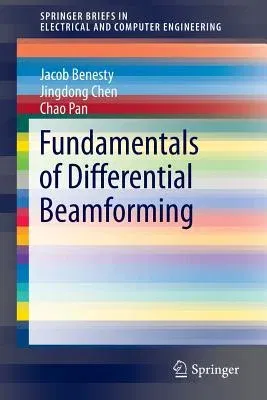This book provides a systematic study of the fundamental theory and
methods of beamforming with differential microphone arrays (DMAs), or
differential beamforming in short. It begins with a brief overview of
differential beamforming and some popularly used DMA beampatterns such
as the dipole, cardioid, hypercardioid, and supercardioid, before
providing essential background knowledge on orthogonal functions and
orthogonal polynomials, which form the basis of differential
beamforming.
From a physical perspective, a DMA of a given order is defined as an
array that measures the differential acoustic pressure field of that
order; such an array has a beampattern in the form of a polynomial whose
degree is equal to the DMA order. Therefore, the fundamental and core
problem of differential beamforming boils down to the design of
beampatterns with orthogonal polynomials. But certain constraints also
have to be considered so that the resulting beamformer does not
seriously amplify the sensors' self noise and the mismatches among
sensors.
Accordingly, the book subsequently revisits several performance
criteria, which can be used to evaluate the performance of the derived
differential beamformers. Next, differential beamforming is placed in a
framework of optimization and linear system solving, and it is shown how
different beampatterns can be designed with the help of this
optimization framework. The book then presents several approaches to the
design of differential beamformers with the maximum DMA order, with the
control of the white noise gain, and with the control of both the
frequency invariance of the beampattern and the white noise gain.
Lastly, it elucidates a joint optimization method that can be used to
derive differential beamformers that not only deliver nearly
frequency-invariant beampatterns, but are also robust to sensors' self
noise.

